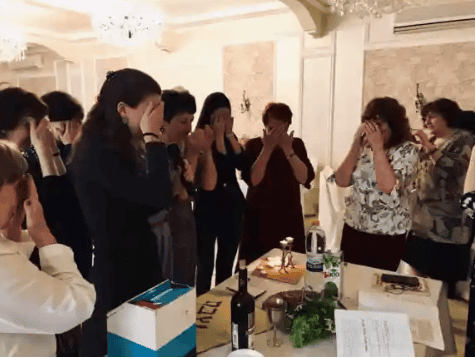TOPPLING THE WALLS
posted September 23, 2024 by Rabbi Anna Calamaro

This Elul marks the anniversary of my moving from Chicago to Los Angeles. As I’ve come to expect of most late summer days in Southern California, my move-in day was swelteringly hot. While carrying one of many boxes upstairs, I bumped into my new neighbor, Tom, who was also moving in. As the perspiration dripped down our faces, we exchanged names, pleasantries, and exhausted sighs before continuing with our respective moves.
The next morning, my husband and I awoke to the sound of drills and hammers. It was as if someone was doing construction right in our apartment. Peering out our window, we saw our new neighbor hard at work. His ground-floor apartment featured a small patio with a cement wall encircling it. To our bewilderment, Tom had decided to build an additional fence on top of the existing cement wall.
“Maybe this is what people do in Los Angeles?” my husband suggested. We shrugged, laughed, and continued unpacking. The following day, we heard more drilling. Through our window, we could see another new addition to Tom’s fortress: a canopy. He had draped a cover over his entire patio, connecting it to the corners of his fence in such a way that his walled, fenced patio was now completely sealed off. After that point, light could not enter through his apartment windows anymore.
Fences and walls are no stranger to Judaism. Rabbi Akiva teaches us that “tradition is a fence to the Torah and a fence to wisdom is silence” (Pirkei Avot 3:13). This metaphorical fence is a way to protect and honor the Torah. We also learn that Torah can be acquired in 48 ways. One is through “making a fence around your words” (Pirkei Avot 6:6). These types of fences protect us. They set boundaries. They define our space.
But our tradition also warns us about such separations, stating “do not separate yourself from the community” (Sanhedrin 2:5). Just as with Tom’s patio, fences and walls sometimes can darken our own views. Walls keep us inside ourselves, and they prevent others from coming in.
Elul offers a unique window of opportunity to dismantle some of our walls. We cannot successfully prepare ourselves for the High Holy Day season without first removing our barriers so that we might take a “cheshbon hanefesh,” an accounting of our souls. It is why we remove our clothing, nail polish, and even contact lenses before submerging in a mikveh, the Jewish ritual bath, especially frequented during Elul. By removing barriers between our outer trappings and our inner selves, we emerge as purer, clearer, less fenced-in versions of ourselves.
In 2019, I had the privilege of witnessing these walls topple before my eyes. In Romania with, we visited a group of elderly Jews people to welcome Shabbat.
“They don’t speak English and they won’t know Hebrew. They only know Romanian,” we were warned by our guide before entering the room. Challenge accepted, we thought, as we took our seats next to strangers who looked like our own grandparents. As if our communal singing and praying was not enough to unify us, a woman tapped my shoulder and placed a book in my hand.
“It’s for you,” a translator explained. “She wants you to keep it.” Before I could ask the woman what the thick, musty Romanian tome was, she smiled through her teeth and answered, “Torah.” In this moment, the hours of travel, the unfamiliar cuisine, the confusing currency, and all other barriers of trivial differences fell by the wayside. We were unequivocally one people one kehillah (congregation). There was no difference between us.
My experiences as a Weitzman–JDC Fellow, between Hungary, Romania, Israel, Lithuania, cemented my understanding of walls, or lack thereof.
My experiences were borderless. It became clear to me that the thousands of miles between our customs, lifestyles, and even Jewish practices could never separate the deep sense of intrinsic connection we found in each other.
When we are willing to move beyond walls and fences, when we are willing to open ourselves up instead of closing ourselves in, we then can fully realize the value of arevut — mutual responsibility toward one another. As the sage Hillel the Elder taught: “When I am only for myself, what am I?” This Elul, let’s not build walls or fences or patio canopies; instead, let us practice letting our walls down. Only when we peel back the borders of our hearts can we feel the Divine in our world and allow the light to come in.